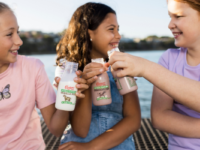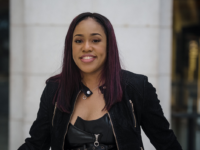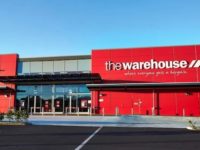 This week, we interviewed Andrea Gonzalez, global IT manager of commerce and experiences at Treasury Wine Estates.
This week, we interviewed Andrea Gonzalez, global IT manager of commerce and experiences at Treasury Wine Estates.
Ranking 40th in this year’s Top 50 People in E-Commerce, Gonzalez started her retail career in marketing and customer loyalty before moving into IT, but she continues to bring that customer focus to her work today.
Here Gonzalez shares her predictions for e-commerce uptake in the grocery sector and what it was like to move to San Francisco. She also shares tips for managing a diverse team.
Heather McIlvaine: You started your career in marketing, with a particular focus on customer loyalty. Given the increased choice and price competitiveness that e-commerce has introduced over the last few years, what are some of the key things you’ve learnt about customer loyalty?
Andrea Gonzalez: Some of the key things I learnt about customer loyalty is that it can’t be based on price alone – instead it’s a deeply personal connection that loyalty creates. In every user study I’ve been a part of over the years I continue to see themes in: people want to be heard, feel part of a community, be recognized, be rewarded and feel investment in the relationship back. These intrinsic needs won’t change is what I’ve learnt most – the execution and delivery of loyalty programs have, but the fundamental needs of a loyalty program stays forever.
HM: You also spent a few years at Coles before joining Treasury Wine Estates. Supermarkets currently have one of the lowest rates of online penetration of any industry. When – if ever- do you think we’ll start to see people buy groceries online en masse?
AG: Now living in the US which is further along the online grocery adoption train, I certainly see that convenience is what makes grocery so appealing for consumers. For bulk items and utilities, a lot of people use online to remedy the hassle and chore of it – while preserving the grocery shopping that’s more pleasurable to be experience-led and therefore in-person.
In regards to your question, will we start to see people buy groceries online en masse: I think the rise in online grocery shopping is already happening, except grocery shopping has been redefined to now be a series of micro-shops.
Example: I buy all my bulk personal, bathroom and laundry products from Amazon Pantry; my fresh food is what I buy in person at Wholefoods; seafood from my fish monger down the street; my meat is an online subscription from a guy in Texas, then canned stuff when I need it is from Costco etc.
HM: Your role sounds different from most of the 2018 Top 50 People in E-Commerce. What does a typical day look like for you?
AG: I have two speeds to my role. One is focused on driving value now, the other looks to create strategic transformation. For both paths, my role is about partnering with internal marketing and direct-to-consumer (D2C) stakeholders to build out consumer experiences and journeys.
I use my background in marketing and product management to take a design thinking approach to identify and solve these problems then match it with technology. If you start with technology first, then you soon get lost in what you’re truly trying to achieve. Plus, there’s a lot of good technology out there – the martech market is overwhelming. My role is about unlocking the value for TWE by thinking user-first.
HM: You recently relocated from Melbourne to San Francisco, where some of the biggest people in tech are based. What has that process been like for you professionally and personally?
AG: Personally it’s been really welcoming, San Francisco is a city of transplants so I never felt alone in being a newbie – everyone here is new. The city is really vibrant with great food, wine and arts scene. On top of that, as you can imagine, it’s at the forefront of tech innovation. You’ll often see driverless car pilots on the streets, plus new concepts like The Ice Cream Museum and the robot-café, and plenty of e-scooters.
Professionally, I’ve felt the transition to be quite good but I won’t lie, it’s definitely a challenge to build a new network. Silicon Valley is all about networking that often date back from college, so as an expat you need to persist. People are open for a conversation almost always – but finding people outside of TWE I can call anytime to soundboard problems and scenarios is still a work-in-progress.
HM: Having experienced the retail offering in the US for around a year now, what do you think are the biggest differences between the state of e-commerce there and here in Australia?
AG: You’ve got several factors that differentiate US and Australian e-commerce. I think population makes it possible for businesses to invest in e-commerce and do it well – economies of scale happen more easily. In addition, the decline of bricks and mortar is happening at a much faster rate.These factors leave retailers with no choice but to embrace e-commerce as a key pillar – whereas in Australia it still feels like a choice.
In the US I’ve especially loved seeing so much diversity of online sellers – there are some really great players – particularly in subscription and D2C. I’m hoping to see more of this in Australia soon.
HM: As the manager of a diverse team from around the world, what if any challenges do cultural differences present? And how do you overcome them?
AG: Cultural challenges definitely arise with global teams, even if you’re speaking the same language. For me, I have learned simple is better and be concise to ensure I am able to collaborate and innovate successfully within my team and cross-functionally. Leaning in to the culture is also important, don’t expect everyone to understand your terminology, style and way of thinking: don’t be afraid to be empathetic.
HM: Many traditional multi-brand retailers need to reckon with the growth of D2C sales, as brands like Nike start building their own stores and websites. How is TWE handling D2C?
AG: D2C is a very authentic extension of Treasury Wine Estates by way of our winery cellar doors which are our brand homes, online shopping and wine clubs – in fact wine was at the forefront of the subscription trend. We use the D2C channel as a way to sell products and experiences that are exclusive to our cellar door and are in limited production – for instance, single-vineyard wines. We see it as a complement to people’s everyday purchasing.















